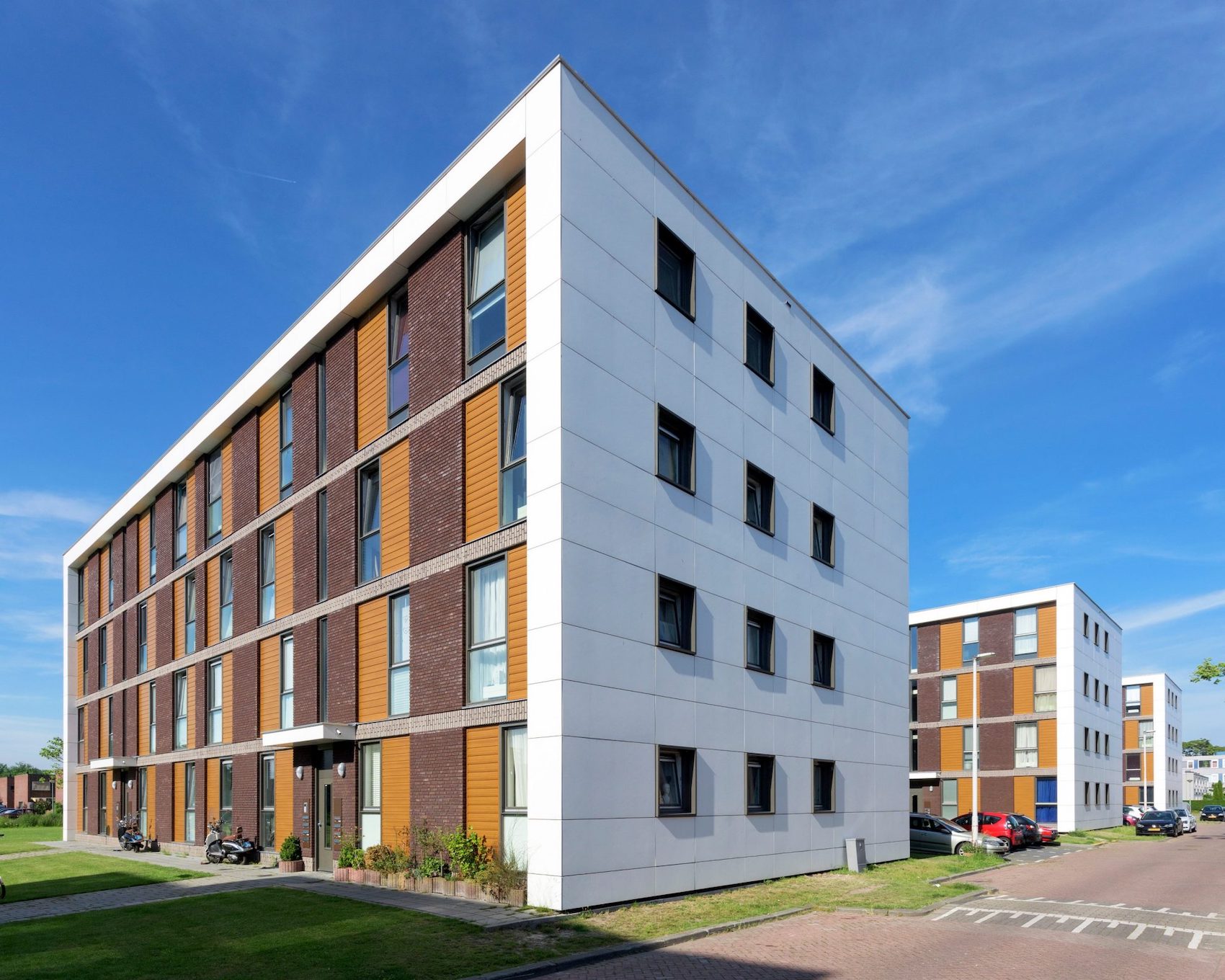Senior Technical and Design Advisor Marcus Franklin of Wienerberger UK – sponsor of the School of Specification – answers readers’ questions on fibre cement rainscreen cladding.
What are the benefits of using fibre cement rainscreen cladding on building projects?
Fibre cement panels are manufactured from a homogeneous mixture of cement, cellulose, reinforcement fibres, additives and water. This versatile building material is ideal for exterior cladding thanks to its durable, low-maintenance, lightweight and fire-resistant nature. Fibre Cement panels are available in a range of surface finishes and tones, including through-coloured panels. Surface coatings can also be applied to create both texture and pattern.
What applications are best suited to the use of fibre cement rainscreen cladding?
Fibre cement rainscreen cladding is used in a variety of building sectors, including residential, education, healthcare and retail. Strength and durability, combined with a lower cost, makes fibre cement cladding suitable for a range of applications. Examples include rear-drained and ventilated rainscreen systems, spandrel panels for curtain walling and window systems, weatherboarding and internal wall linings. Fibre cement has even been used to manufacture table tops, garden furniture and exterior benches.
What sizes of cladding panels are typically available and is there much choice in terms of panel texture, finish and colour?
Fibre cement facade panels are available in a maximum size of around 3×1.2 metres. Panels can be pre-cut to bespoke measurements, which provides the flexibility to play with shape and size in the facade design, while also limiting wastage. The natural appearance of fibre cement offers the look of concrete or stone. Panels are also available in an array of colours and applied finishes. Fibre cement can be through-coloured or painted. Texture is applied by sanding to different degrees, adding glass beads to a paint for a deeper surface finish, or by milling the surface to create deep and pronounced linear grooves.
What is the typical wall build-up?
Fibre cement facade panels are installed as part of a rear-ventilated and drained rainscreen system. The system needs to have a well ventilated cavity zone behind the panels and can also have open joints. Any water that penetrates the joints is removed partly by evaporation and evacuation through the ‘stack’ effect, and partly by water droplets running down the rear face of the panels and out through a ventilation gap at the base of the facade. Fibre cement facade panels are usually mounted onto aluminium support systems and can be fixed with rivets to aluminium sections or with undercut mechanical secret fixings, suspended from an aluminium secondary subframe. In the case of timber structures, panels can be Torque screw fixed to suitable vertical battens. The main structural wall that supports the façade system needs to be fully water, airtight, and non-combustible, while still allowing water vapour to escape from the inside of the building. The cavity zone behind the panels can be insulated, with horizontal and vertical cavity fire barriers installed within the same space.
How does fibre cement rainscreen cladding perform with regards to fire, durability, longevity, and potential recycling/reuse?
Fibre cement rainscreen cladding provides excellent weather and impact-resistance along with an A2-s1,d0 reaction to fire classification (in accordance with BS EN 13501-1), making it suitable for use on multi-storey projects. Panels have a service life of up to 30 years. While the panels will eventually be affected to by UV light, the surface of most boards are protected against a change in appearance by coatings and paints. Panels could potentially be repurposed or broken down to a smaller aggregate size at the end of their life as a façade.
To find out more about brick rainscreen cladding please visit the Wienerberger website.
Click here to access the School of Specification – a new learning platform that explains the technical and philosophical approaches to specification in an accessible and engaging way.
Source: Architecture Today

